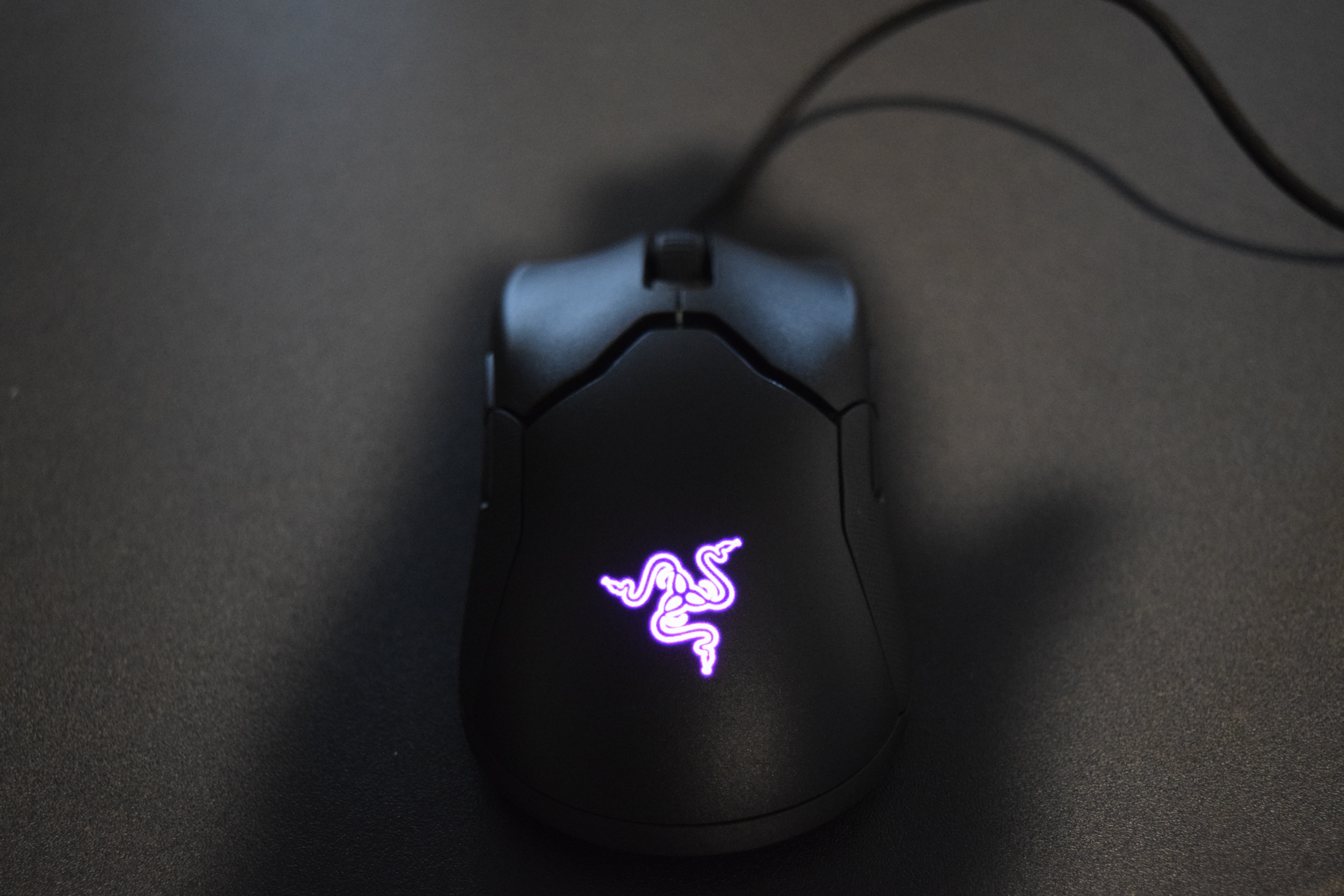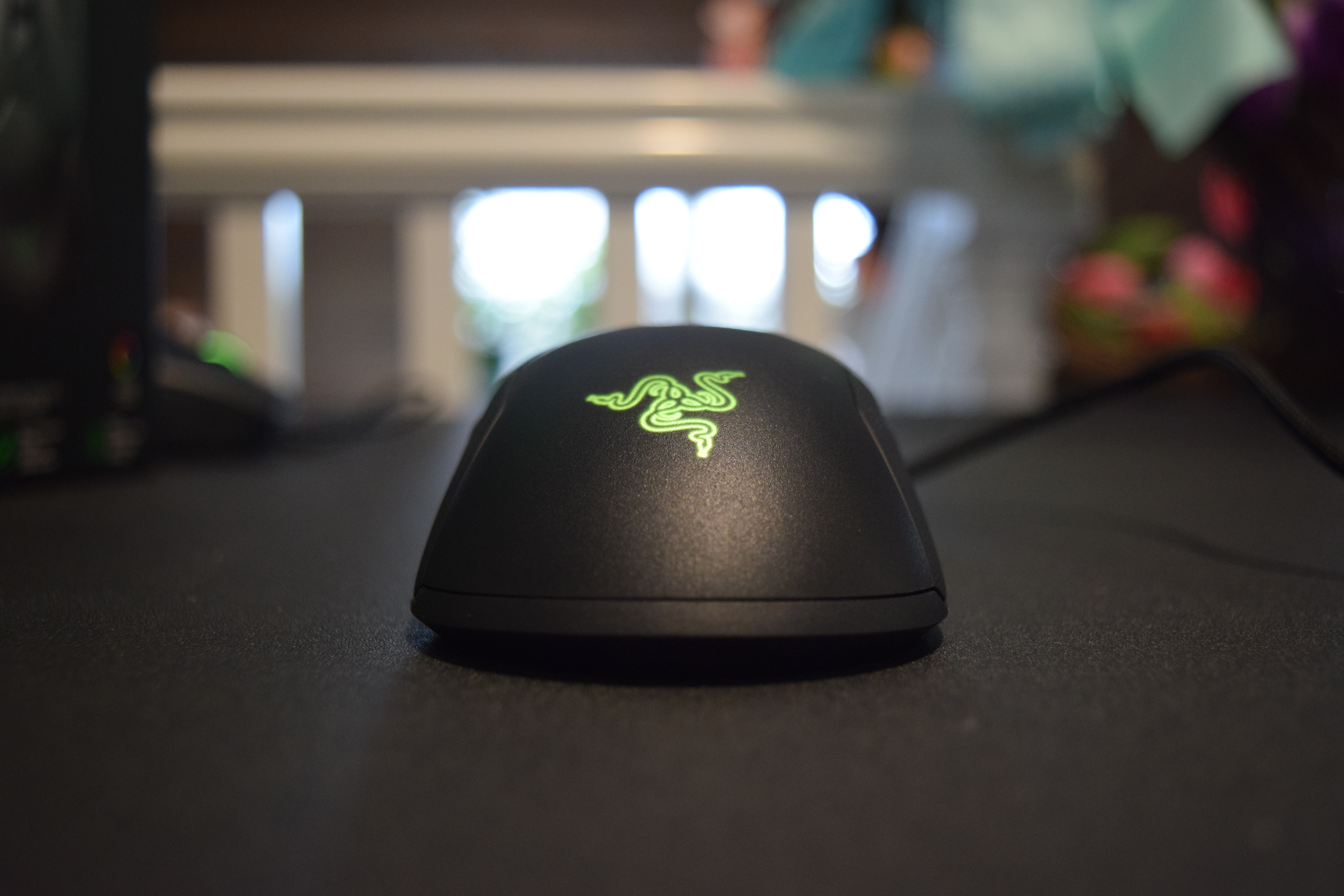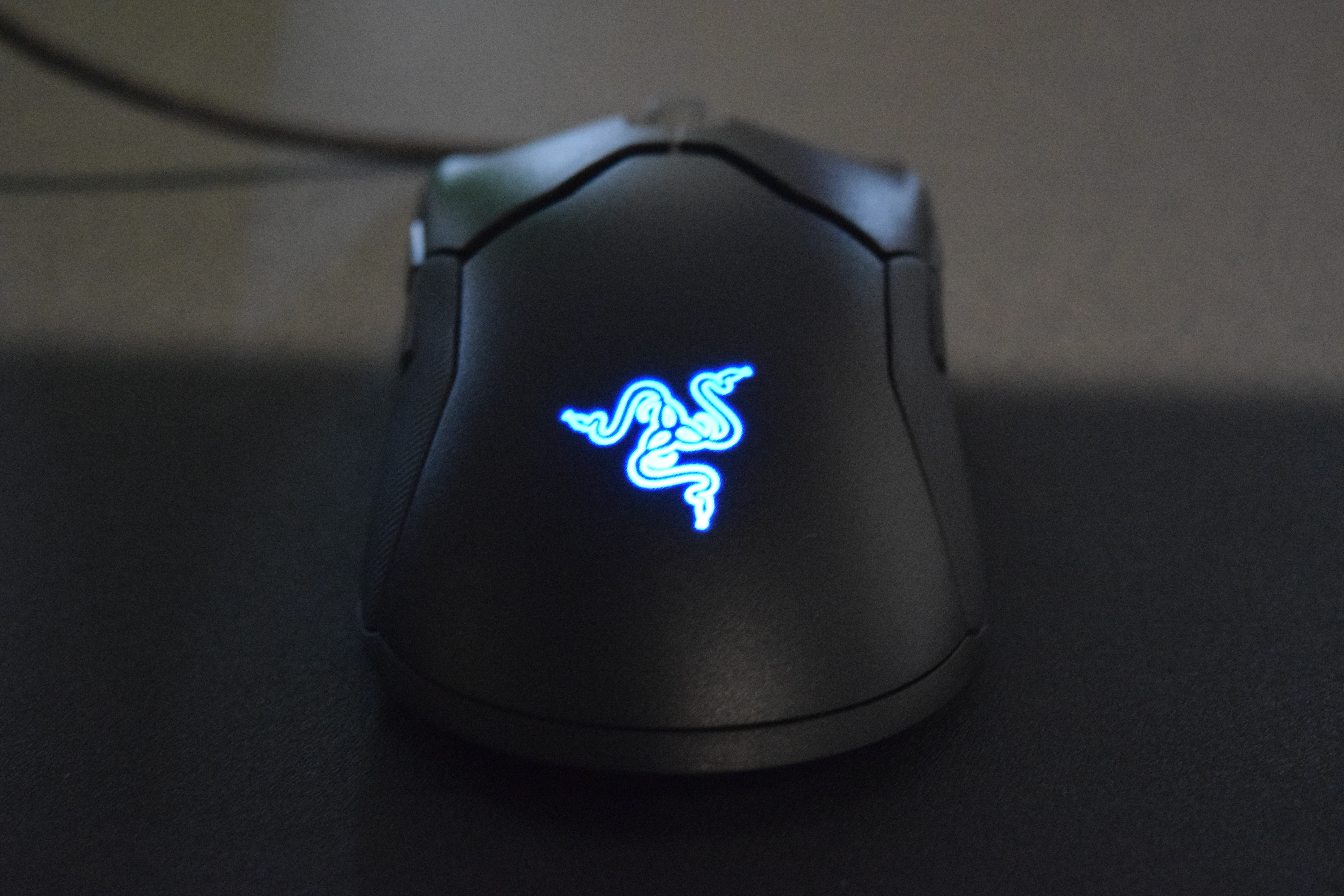Tom's Hardware Verdict
The Razer Viper is a middling gaming mouse with solid technology undermined by its build, which specifically targets claw and fingertip grips but not the common palm grip. Still, it’s among the best options for left-handed players.
Pros
- +
Solid performance
- +
Razer Speedflex cable
- +
Doesn’t hinder left-handed players
Cons
- -
Half the side buttons are hard to use
- -
No standout features
- -
Too small for most palm grippers
Why you can trust Tom's Hardware
The world favors the right-handed. Something like 90% of the population favors their right hand, according to a 2019 report from The Washington Post, and most companies design their products with those righties in mind. That’s especially true for peripherals, but manufacturers occasionally meet lefties halfway, like Razer did with the ambidextrous Viper (MSRP $80, but sometimes available for $60 as of this writing).
But what holds the Viper back from being the best gaming mouse isn’t its ability to appeal to left-handed people, but its limited appeal to grip types. The mouse targets fingertip and claw grippers and will leave palm grippers aching for a different form factor.
Razer Viper Specs
| Sensor Type | Optical |
|---|---|
| Sensor Model | Razer 5G |
| Sensitivity | Up to 16,000 CPI |
| Polling Rates | 125, 500 or 1,000 Hz |
| Programmable Buttons | 8 |
| LED Zones and Colors | 1 RGB zones |
| Cable Length | 6.89 feet (2.1m), Razer Speedflex |
| Measurements (LxWxH) | 4.99 x 2.27 x 1.49 inches (126.73 x 57.60 x 37.81mm |
| Weight (excluding cable) | 2.43 ounces (69g) |
Razer Viper Design and Comfort




If you told someone to imagine an ambidextrous mouse from Razer, I bet they’d immediately imagine an exact replica of the Viper -- and not just because it prominently features Razer’s serpentine logo on the palm rest. It’s a black-and-gray mouse (check) with contouring on both sides (check) that’s supposed to allow both righties and lefties to grip the mouse with ease.
That’s also why the Viper boasts four side buttons -- two on the left and two on the right, Righties and lefties both have easy access to a couple of side buttons. Unfortunately, this also meant I found two of the Viper’s eight programmable buttons (the other six are the left and right buttons, mouse wheel and CPI button) are next to useless because they’re on the opposite side of the mouse than what I'm used to. I’ve yet to feel comfortable pressing a side button with my pinky or ring finger. Maybe it’s just because I’m conditioned to press side buttons with my thumb, but those outside digits feel neither strong nor precise enough to reliably press the side buttons they hovered over while I gripped the mouse. Razer also told us that if it were to make the buttons less symmetrical here, it wouldn't be a good ambidextrous mouse for lefties.
Razer equipped the Viper with its 5G Advanced Optical Sensor (up to 16,000 CPI), which is a generation behind the Focus+ sensor found in the DeathAdder V2 and Basilisk V2. The Viper also features Razer Optical Mouse Switches rated for 70 million clicks, and a 2.1m Razer Speedflex cable for fighting drag and RGB lighting in the aforementioned palm rest logo. Does it have the latest-and-greatest sensor, multiple RGB lighting zones or wireless options? No. That particular combination of specs means the Viper, in keeping with its ambidextrous design, sits right in the middle of two generations of Razer products.
The Viper measures 4.99 x 2.61 x 1.49 inches (LxWxH) and weighs 2.43 ounces without factoring in the cable. That makes it less long and slightly wider, yet shorter than the Basilisk V2 (5.11 x 2.36 x 1.65 inches, 3.3 ounces). It’s even less long and short than the ultralight weight Glorious Model D FPS mouse (5.04 x 2.4 x 1.65 inches, 2.4 ounces). Ultimately, my hand felt considerably smaller than normal when using the Viper. The contours on both sides meant the Viper felt even more different.
What does that mean for comfort? Based on my experience, most right-handed people aren’t going to enjoy the Viper, and I suspect that many left-handed people won’t either. (They should have the same experience--it’s an ambidextrous mouse--but I figure that decision is best left to the, well, left.) Unlike the bulbous DeathAdder V2, the Viper actually felt too small in my hands when I used a modified palm grip, although claw and fingertip grippers might fare better. The Viper felt awkward to hold with my right hand, especially when my pinky brushed up against a side button.
Get Tom's Hardware's best news and in-depth reviews, straight to your inbox.
Razer also makes a Viper Mini, which is smaller by all means than our review subject (4.66 x 2.11 x 1.51 inches, 2.08 ounces), which proved best for fingertip grips and smaller hands or fingers. The Viper, meanwhile, seems to fit better with fingertip or claw grips.
Razer Viper Gaming Performance
My discomfort with the Viper’s design extends to its in-game performance. But first, the good stuff. Razer’s 5G sensor felt accurate, I didn’t notice any mis-clicks and the 1,000 Hz polling rate ensured smooth gameplay. The side buttons were responsive, with the two on the left side easy for my right hand to reach. The Viper is technologically sound; the problem is that the casing is off-key.
Imagine this: You’re playing as Zarya, an Overwatch tank who does more damage as she gains more charge. Accumulating charge requires you to snap to endangered teammates in time to deploy a protective bubble. More charge equals more damage… assuming you can accurately laser down your opponent with Zarya’s primary fire. The character requires you to flick (bubbles) and track (laser) in equal measure. When I played, the Viper technically kept up with all of Zarya’s demands. But because I didn’t feel comfortable holding the itty-bitty mouse, I often felt like I was about to fling the Viper across the room every time I tried to protect my teammates.
My tracking also suffered because I constantly shifted my grip in a vain search for something resembling stability. The mouse burst my bubble faster than the enemy team could burst Zarya’s.
The ultimate caveat, of course, is that compromises for righties might make the Viper better serve lefties. I’m sure that being able to hold the mouse with your preferred hand would make it a better pick than a right-handed mouse that feels designed for you to fail. All I have is my imagination, though, fumbled attempts at playing with my left hand be darned.
But beyond its ambidextrous design, the mouse does boast features some other unique features that aid in gameplay, like the Speedflex cable. There are also optical switches that are supposed to actuate three times faster than mechanical ones. According to Razer, the left and right mouse buttons actuate faster on the Viper than on any of their other mice, so very competitive gamers may see some appeal here.
However, in my experience the optical switches didn't show any noticeable difference compared to mechanical switches in-game. It's possible more finnicky players, a very small percentage of gamers, may notice, and Razer's automated testing points to advantages. Plus, the optical switches should assist with durability. Unfortunately, I don't have a way to push tens of millions of clicks onto these switches to confirm their purported failure rate.
Razer Viper Features and Software
Ready your fainting couches: the Razer Viper supports both the Razer Synapse customization software and the Razer Chroma RGB lighting utility. I know, I know, that seems implausible in 2020, but the folks at Razer did it, by golly.
All joking aside, the only thing that sets the Viper apart from other Razer mice is its ambidextrous design. As with other Razer pointers, you can use Synapse software to set up to five CPI stages, (which are saved to the mouse’s onboard storage), or customize the polling rate because someone on Reddit managed to convince you that setting it to less than 1,000 Hz would offer a competitive advantage.
Razer Chroma lets you pick between 16.8 million colors for the palm rest’s RGB lighting and can keep that lighting in sync with other Razer peripherals (at this point I’m more surprised when a mouse doesn’t offer some kind of RGB lighting).
Bottom Line
The Razer Viper is an ambidextrous mouse that features technologies new and old. It’s like Razer threw a snake tooth (fang?) at a Venn diagram of potential gaming mouse buyers and struck right in the middle. In theory, it should appeal to pretty much anyone. But in practice, it was different.
The Viper is specifically for fingertip and claw grippers and is too small for most palm grippers to use comfortably. With my natural palm grip I struggled to access half of the side buttons as a right-hander, and a lefty would encounter the same problem. The Viper could have overcome those shortcomings with additional features, but with so many of its technologies present in other Razer mice, except for the optical switches for the left and right mouse buttons, that simply isn’t the case. Righties would almost certainly be better off buying the Basilisk V2 ($80) or Basilisk X HyperSpeed ($60 MSRP) or, if they have large hands, even the DeathAdder V2 ($70) that I enjoy body-shaming so much.
But to you lefties I say, the Viper is a solid gaming mouse that will probably serve you well. Please allow me to extend my sincere condolences, however, that being left-handed means a mouse that doesn’t wow could be your best mainstream option.

Nathaniel Mott is a freelance news and features writer for Tom's Hardware US, covering breaking news, security, and the silliest aspects of the tech industry.
-
AnUnusedUsername At least for me, the only mice I can even consider using are ambidextrous. I use a fingertip grip, and if the mouse isn't symmetrical, there's nothing for the right side of my hand to grab on to. I had a death adder for about a week and just could not get used to it, it was too big and bulky. (Mice I've had and liked: Copperhead, Taipan, G203, aaand, so far that's it.)Reply
I nearly bought a Viper but the recessed thumb buttons completely ruined it for me. It's arguably the best symmetrical mouse out there right now, but those thumb buttons... If they were raised like every other mouse in existence I'd have a viper instead of a G203.

